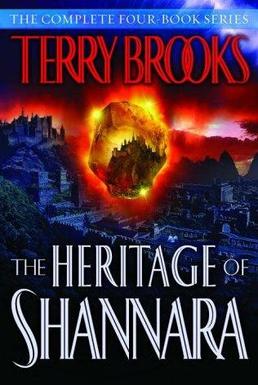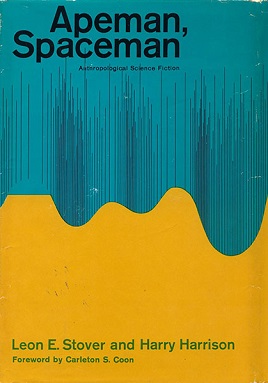
Alternate history is a subgenre of speculative fiction in which one or more historical events have occurred but are resolved differently than in actual history. As conjecture based upon historical fact, alternate history stories propose What if? scenarios about crucial events in human history, and present outcomes very different from the historical record. Some alternate histories are considered a subgenre of science fiction, or historical fiction.

Ragnar Lodbrok, according to legends, was a Viking hero and a Swedish and Danish king.

Foundation's Edge (1982) is a science fiction novel by American writer Isaac Asimov, the fourth book in the Foundation Series. It was written more than thirty years after the stories of the original Foundation trilogy, due to years of pressure by fans and editors on Asimov to write another, and, according to Asimov himself, the amount of the payment offered by the publisher. It was his first novel to ever land on The New York Times best-seller list, after 262 books and 44 years of writing.

The Years of Rice and Salt is an alternate history novel by American science fiction author Kim Stanley Robinson, published in 2002. The novel explores how world history might have been different if the Black Death plague had killed 99 percent of Europe's population, instead of a third as it did in reality. Divided into ten parts, the story spans hundreds of years, from the army of the Muslim conqueror Timur to the 21st century, with Europe being re-populated by Muslim pioneers, the indigenous peoples of the Americas forming a league to resist Chinese and Muslim invaders, and a 67-year-long world war being fought primarily between Muslim states and the Chinese and their allies. While the ten parts take place in different times and places, they are connected by a group of characters that are reincarnated into each time but are identified to the reader by the first letter of their name being consistent in each life.

Thomas Alan Shippey is a British medievalist, a retired scholar of Middle and Old English literature as well as of modern fantasy and science fiction. He is considered one of the world's leading academic experts on the works of J. R. R. Tolkien about whom he has written several books and many scholarly papers. His book The Road to Middle-Earth has been called "the single best thing written on Tolkien".

The Heritage of Shannara is a series of four fantasy novels by Terry Brooks, set hundreds of years after the original Shannara trilogy. Unlike the original trilogy, however, this series is all one, cohesive story, in contrast to the three isolated stories of the originals. It is set in a future Four Lands in which the Federation of the Southland has driven off the Elves, enslaved the Dwarves, and outlawed magic. Only the rebel Free-born, led by Padishar Creel, dare to resist. The series begins with The Scions of Shannara (1990), when the Ohmsford descendants are summoned by the shade of Allanon to combat the Shadowen that have been poisoning the land, each charged with a quest only they can embark on. The story continues with The Druid of Shannara (1991), The Elf Queen of Shannara (1992), and concludes with The Talismans of Shannara (1993).

Lucifer's Hammer is a science fiction post-apocalypse-survival novel by American writers Larry Niven and Jerry Pournelle that was first published in 1977. It was nominated for the Hugo Award for Best Novel in 1978. Two issues of a planned six-part comic book adaptation were published by Innovation Comics in 1993.

John Birmingham is a British-born Australian author, known for the 1994 memoir He Died with a Felafel in His Hand, the Axis of Time trilogy, and the well-received space opera series, the Cruel Stars trilogy.
Kushiel's Legacy is a series of fantasy novels by American writer Jacqueline Carey, comprising the Phèdre Trilogy and the Imriel Trilogy. Since the series features a fictional version of medieval Western Europe, it can be considered historical fantasy or alternate history.

The Farseer trilogy is a series of fantasy novels by American author Robin Hobb, published from 1995 to 1997. It is often described as epic fantasy, and as a character-driven and introspective work. Set in and around the fictional realm of the Six Duchies, it tells the story of FitzChivalry Farseer, an illegitimate son of a prince who is trained as an assassin. Political machinations within the royal family threaten his life, and the kingdom is beset by naval raids. Fitz possesses two forms of magic: the telepathic Skill that runs in the royal line, and the socially despised Wit that enables bonding with animals. The series follows his life as he seeks to restore stability to the kingdom.

One King's Way is the second part of the trilogy by Harry Harrison and John Holm that began with The Hammer and the Cross. The book was published in 1995.

Prime Number published in 1970, is a collection of science fiction stories by American writer Harry Harrison.
Michael Scott Rohan was a Scottish fantasy and science fiction author and writer on opera.

A Rebel in Time is a 1983 science fiction novel by American writer Harry Harrison.

Odd and the Frost Giants (2008) is a World Book Day book by Neil Gaiman. It draws on Norse mythology and also the historical Vikings.

Conan of Venarium is a fantasy novel by American writer Harry Turtledove, edited by Teresa Nielsen Hayden, featuring Robert E. Howard's sword and sorcery hero Conan the Barbarian. It was first published in hardcover by Tor Books in July 2003; a regular paperback edition followed from the same publisher in July 2004.

The Saga of Shadows is a trilogy of space opera novels written by Kevin J. Anderson. First announced in 2011, it is a sequel to Anderson's seven-book series, The Saga of Seven Suns (2002–2008). The first novel, The Dark Between the Stars, was released by Tor Books on June 3, 2014. The second book in the series, Blood of the Cosmos, was published on June 2, 2015. The third novel, called Eternity's Mind, was released on September 13, 2016.

Kat Zhang is an American award-winning author of young adult and middle grade literature. She has also written two picture books, Amy Wu and the Perfect Bao and Amy Wu and the Patchwork Dragon. Her first trilogy, The Hybrid Chronicles, was published by HarperCollins in the United States. According to WorldCat, the series is held in 2,545 libraries, and has been translated into Chinese, German, Spanish, French, Portuguese, Polish and Italian. The first volume, What's Left of Me, was published in 2012; the second volume, Once We Were, was published in 2013; and the third and final volume, Echoes of Us, was published in 2014.

Apeman, Spaceman: Anthropological Science Fiction is an anthology of science fiction short stories edited by Harry Harrison and Leon E. Stover. It was first published in hardcover by Doubleday in June 1968, with a paperback edition following from Berkley Medallion in March 1970. The first British editions were issued in hardcover by Rapp & Whiting in October 1968 and in paperback by Penguin Books in November 1972. The book has been translated into German.


















